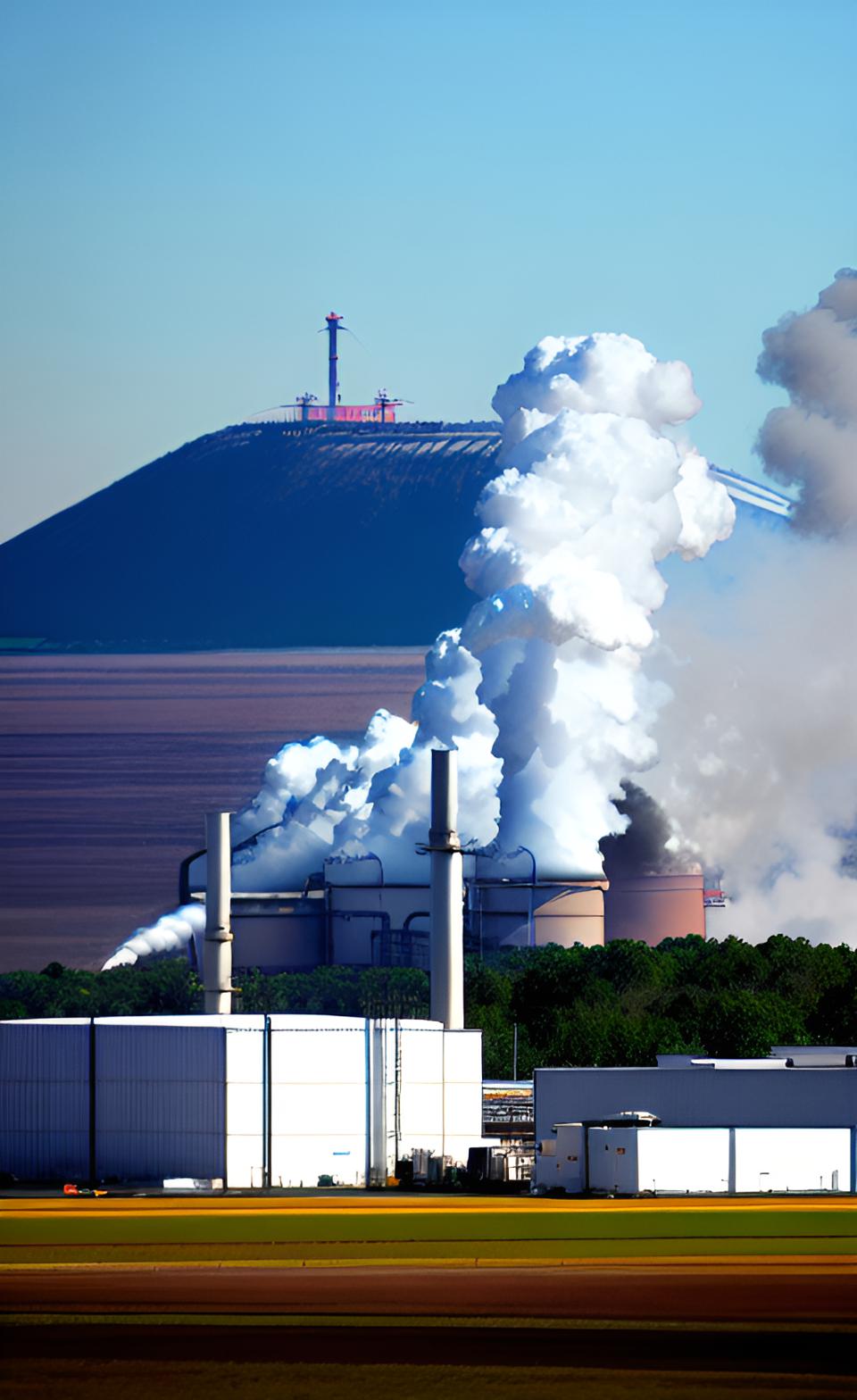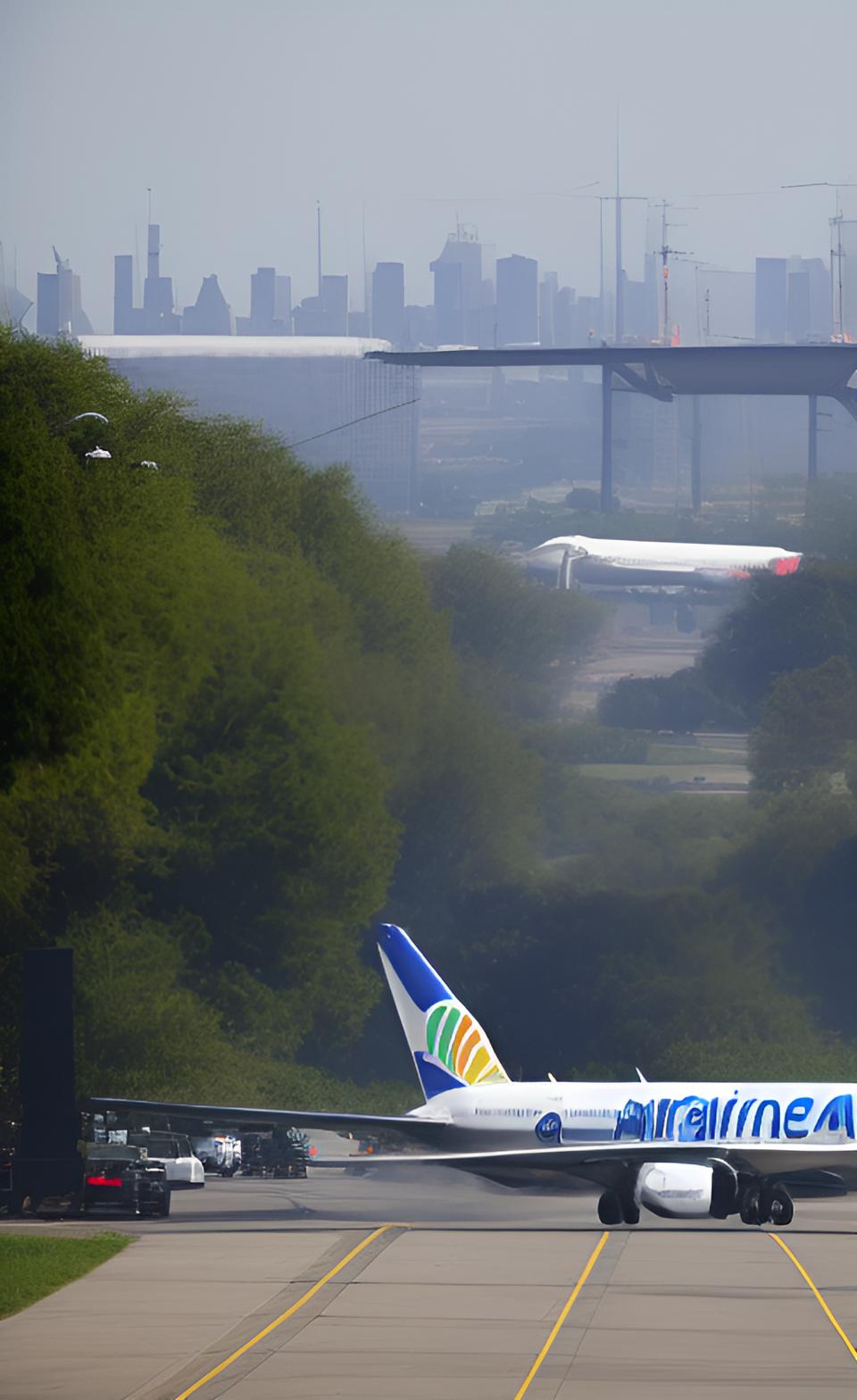- Air Homepage
- Alberta Air Quality
- Prevention of Air Pollution
- How to Calculate Emissions
Getting an understanding of how to calculate emissions with these Essential steps
Let's walk through how to calculate emissions, the Alberta Annual Emissions Inventory Report (AEIR's) emissions quantification process. It's quite detailed and needs a lot of attention. These instructions draw from Chapter 16 of the AEIR Standard document.
Calculating actual, normal, and annual emissions - Can you tell me the exact formulae for turning raw operating data into the three mandatory emission rates? You don't have to guess your pollution levels anymore, you can find out the precise, step-by-step method for quantifying your industrial emissions.
 Environmental decision-making based on emissions data
Environmental decision-making based on emissions dataData collection starts with a variety of emission sources, equipment, and controls to reduce pollution. Using monitoring data intelligently and allocating data without individual unit specifics is also important.
In order to report annual actual, normal, and maximum emission rates during the process, you'll need some new tools. As you progress through these detailed steps, starting with identifying Schedule 1 and 2 substances and preparing a submission using a variety of reporting methodologies, you'll gain expertise in emission reporting, facilitating informed environmental management decisions and ensuring compliance with regulatory standards for environmental protection.
Here we go with Emissions Quantification in four steps.
16.1 - Get the info you need
The first step in this phase of preparing the AEIR (Annual Emissions Inventory Report) is to gather important supporting information. Here's a quick summary:
You should have collected essential data by now, including information about emission sources, equipment, pollution controls, source monitoring, operational data, emission limits, and quantification methods.
 Estimating emissions from ungated sources
Estimating emissions from ungated sourcesPlease review Section 3.12 (de minimis and negligible sources), Section 3.13 (negligible Schedule 1 substances), and Section 14.0 (identifying applicable Schedule 2 substances) before proceeding.
Monitoring data: For how to calculate emissions and rates, most quantification methods require monitoring data. You'll need to gather supporting data like monitoring records, fuel usage, input/output figures, solvent and chemical usage, etc.
Data allocation: Sometimes, activity data is only available for a group of equipment or sources. You don't need to install additional meters in these cases. Instead, you can estimate how the data should be divided between the units.
Let's say you have two heaters and they both use natural gas, which comes from a single pipe that measures how much gas comes through. The problem is we don't know how much gas each heater uses because they aren't metered individually.
You can assume an equal split (half for each) if the heaters are similar in make, model, age, and operating hours, and they're fed from the same gas pipe. With a bit of math, it's possible to estimate the emissions from each.
In another example, two compressor engines using one metered pipe, but different sizes and manufacturers, estimate based on engine size and available info. You might assign 75% of the gas volume to the bigger engine and 25% to the smaller one. There's an algorithm for that.
Basically, this step makes sure you gather all the data you need for how to calculate emissions, even if you don't have data for every unit. You can use estimates and allocations when you need them.
16.2 - Quantifying and reporting actual ANNUAL emissions of certain substances.
- This step calculates and documents the actual emissions for Schedule 1 and Schedule 2 substances.
- A quick overview: In the AEIR, Clauses RC 7-M and RC 7-O define the general requirements for reporting annual actual emissions. There are mandatory and optional fields on the AEIR Form.
- Follow these steps: Substances in Schedule 1 and Schedule 2: In earlier steps, you should have identified these substances. For Quantification Methods, apply the supporting information you gathered earlier. The AEIR Standard has sample calculations in Section 15.3.
- What to report: Enter data in AEIR Form; enter the annual actual emissions and the quantification methods. Document the quantification methods in a separate document (Section 19 of the AEIR Standard).
- A few notes: Actual yearly total air emissions should be reported in tonnes. Future sources that aren't running yet might have maximum and normal emission rates to report, but not actual annual emissions. Select the most representative quantification method in the AEIR Form if multiple methods were used for one source or substance.
Describe all methods used for each source-substance combination in the Quantification Methodology Document. Here's how to report emission rates for different sources and substances:
 Emissions quantification process in Alberta
Emissions quantification process in AlbertaEmission rates for Schedule 1 - Release Points:
Please let us know if you're reporting Schedule 1 substance emissions. Release Point Descriptive Name should already be filled in. Enter the tonne/year actual emission rate for the specific release point. Decide what method you're going to use for quantification.
Emission rates for Schedule 2 - Release points:
Schedule 2 substances are similar to Schedule 1. Select whether you're reporting Schedule 2 substance emissions. We keep the Release Point Descriptive Name. Choose a Schedule 2 substance. Enter the tonne/year actual emission rate for the specific release point. Decide what method you're going to use for how to calculate emissions.
Emission rates for Schedule 1 - non-point sources:
Tell us if you're reporting non-point source Schedule 1 emissions. Fill out the Non-Point Source Descriptive Name. Enter the annual actual emissions for the specific non-point source in tonnes. Decide what method you're going to use for quantification.
Emission rates for Schedule 2 - non-point sources:
Schedule 2 substances are similar to Schedule 1. If you're reporting non-point source Schedule 2 emissions, choose that option. Non-Point Source Descriptive Name is carried over. Choose a Schedule 2 substance.
Enter the annual actual emissions for the specific non-point source in tonnes. Decide what method you're going to use for how to calculate emissions. These steps are crucial for accurately reporting emissions, which helps monitor and manage the environment.
16.3 - Estimate and report NORMAL emission rates for Schedule 1 and Schedule 2 substances
This one involves quantifying and reporting normal emission rates for specific substances. Here's how it works:
- This step calculates and documents normal emission rates for Schedule 1 and Schedule 2 substances.
- The big picture: RC 7-M explains how to report normal emission rates. There are mandatory and optional fields on the AEIR Form.
- Here's how: Identify Schedule 1 and Schedule 2 substances: Earlier, you should have identified these substances. For quantification methods, use the collected supporting information to calculate normal emission rates. The AEIR Standard provides sample calculations in Section 15.4.
- The report: Fill out the AEIR form with normal emission rates and quantification methods. How to calculate emissions: Include information on quantification methods in a separate document (see Section 19 of the AEIR Standard).
- Some notes: Emissions under normal operating conditions aren't tied to specific time periods. Only release points are reported in this way and are to be provided in tonnes/day. Rates are calculated based on typical operations and are assumed to be constant throughout the day. Sources that are temporarily down are still reported at normal rates. Here's how to report normal emission rates for different types of substances:
 Emissions from different sources
Emissions from different sourcesEmission rates for Schedule 1 - Release Points:
Enter the tonnes/day quantified normal NOx emission rate for the specific release point. You can use the "Single Source Sample Normal Method" for quantification.
Emission rates for Schedule 2 - Release points:
From the dropdown menu, choose the Schedule 2 substance you want. For the release point, enter the quantified normal emission rate in tonnes/day for the selected Schedule 2 substance. Choose a quantification method, such as "Single Annual Actual Normal Method." For other Schedule 1 and Schedule 2 substances, the same options and steps apply.
Understanding how emissions behave under normal conditions is important. It makes it easier to assess your operation's environmental impact and compliance.
16.4 - How to calculate emissions: MAXIMUM rates for Schedule 1 and Schedule 2 substances
Quantify and report maximum emission rates for Schedule 1 and Schedule 2 substances
The AEIR requires you to report the general maximum emission rate information in clause RC 7-M. There are mandatory and optional fields on the AEIR Form that need to be filled out. Preparing the AEIR requires quantifying the maximum emissions rates for Schedule 1 and Schedule 2 substances at each release point.
 Historical data vs approval limits
Historical data vs approval limitsBy applying the required supporting information to the selected quantification methods, we can figure out how to calculate emissions. By this point, you should have identified the Schedule 1 substances emitted by each release point. You also should have identified the Schedule 2 substances being emitted. In Section 15.5 of the AEIR Standard, you'll find sample calculations for the various maximum emission rate methods.
When the maximum emission rates have been quantified, both the maximum emission rates and the quantification methodologies used must be entered into the AEIR Form. The Quantification Methodology Document must also include information about the quantification methods used (see Section 19).
Maximum rates don't necessarily reflect actual amounts released for a particular one hour period in the inventory year, they're theoretical rates (unless they're based on measured maximum rates). Typically, maximum rates are calculated as hourly rates based on maximum operations/emissions (or the source's approval limit).
Maximum air emission rates are only required for release points and should be reported in kilograms/hour. The maximum emission rates (as per the EPEA approval/renewal application and associated modelling or approval emission limit) would be reported (if applicable). Sources that are temporarily shut down will still have maximum rates, since maximum rates are just maximum potential rates.
Emission rates for Schedule 1 - Release points
Here's how to fill out worksheet 2.6.1 of the AEIR Form with maximum emission rate information, including examples. In Appendix C of the AEIR Standard, Table 43 shows the data types and conditions for worksheet 2.6.1: Release Point - Schedule 1 Emission Rates.
Emissions of NOx (kg/hour): 58.0000
Enter the quantified maximum NOx emission rate for this release point. The maximum emission rate should be in kilograms/hour. This field must not be left blank if reporting maximum NOx emissions from a specific release point.
Method for calculating maximum NOx - Maximum from approval
The method used to determine the maximum NOx emission rate at the release point must be selected (from a dropdown menu). Section 15.5 of the AEIR Standard describes acceptable methods for estimating maximum air emissions. You can't leave this field blank if you're reporting maximum NOx emissions from a specific release point. The same fields are needed for the other Schedule 1 substance emission rates and quantification methods.
Emission rates for Schedule 2 - Release points
Prior to reporting the maximum emission rate and how to calculate emissions for Schedule 2 substances, the specific substance must be selected. Here's what you need to know about worksheets 2.6.2 to 2.6.6 of the AEIR Form, including examples.
Emission rates for Schedule 2 in worksheets 2.6.2 to 2.6.6
In Appendix C of the AEIR Standard, Table 44 shows the data fields for worksheet 2.6.2 to 2.6.6: Release Point - Schedule 2 Emissions.
Emissions maximum (kg/hour) example - Compounds of antimony
The Schedule 2 substance being reported must be selected from a dropdown menu. You can't leave this field blank if you're reporting maximum emissions from a specific release point.
Emissions maximum example (kg/hour): 0.0114
This field asks for the quantified maximum emission rate of the selected Schedule 2 substance. The maximum emission rate should be in kilograms/hour. You can't leave this field blank if you're reporting maximum emissions from a specific release point.
Method of maximum quantification - If you want to go with the Maximum method based on history, select (from a dropdown menu) the quantification method used to determine the maximum emission rate of the selected Schedule 2 substance for the inventory year for the release point. This section describes acceptable methods for quantifying maximum emission rates.
 Reporting and Quantification of releases
Reporting and Quantification of releasesFor maximum rates, see how to calculate emissions in AEIR Standard 15.5. This field can't be left untouched if the maximum emissions of the Schedule 2 substance are being reported from a specific release point.
There are the same fields for reporting other Schedule 2 substance emission rates and quantification methods as shown in worksheets 2.6.2 to 2.6.6.
See Appendix C for more depth.
Non-standard method requests are usually handled by the Alberta Air Emissions Inventory Team.
Requests for multiple non-standard quantification methods can be submitted in one request to the Director, as long as each request includes the required supporting information. You could combine requests for NOX emissions from Stack A and SO2 emissions from Stack B, for example.
Basically, this document outlines how to get permission to use non-standard quantification methods for how to measure air pollution in Alberta when the standard ones don't work.
Find out how Calvin Consulting Group Ltd. tracks air quality!
Are you an Alberta industrial facility that's regulated by EPEA? 🏭 Are you worried about your Annual Emissions Inventory Report (AEIR)? We're here to help!
Simplified Emission Reporting: Every year, AEIR submissions are due by September 30th. This complex process is simplified by us, so you have all the info you need.
We'll help you identify emission sources so you can choose the right method. AEIR helps you comply with Alberta regulations and deliver the best environmental impact statement. Using appropriate quantification tools, we help you figure out emissions rates.
Our experts help you every step of the way, from identifying emission sources to choosing quantification methods. Through the AEIR process, our team ensures compliance with regulations and optimizes environmental impact assessments.
We help you calculate emissions rates for Schedule 1 and Schedule 2 substances using advanced quantification methods. Providing thorough documentation and reporting promotes environmental stewardship.
📧 Get Hassle-Free AEIR Solutions Now! Let us handle your emissions reporting. Contact Calvin Consulting Group Ltd. at

...for AEIR consulting services. Together, let's protect air quality and comply with regulations!
Clean air is our Passion...Regulatory Compliance is our Business.
Learn how to calculate emissions for Alberta's Annual Emissions Inventory Report (AEIR).
Start with data collection and work your way up to quantification methods. Ensure thorough compliance with environmental regulations even when data isn't available for individual units or release points.
Do you have concerns about air pollution in your area??
Perhaps modelling air pollution will provide the answers to your question.
That is what I do on a full-time basis. Find out if it is necessary for your project.
Have your Say...
on the StuffintheAir facebook page
Other topics listed in these guides:
The Stuff-in-the-Air Site Map
And,
Thank you to my research and writing assistants, ChatGPT and WordTune, as well as Wombo and others for the images.
OpenAI's large-scale language generation model (and others provided by Google and Meta), helped generate this text. As soon as draft language is generated, the author reviews, edits, and revises it to their own liking and is responsible for the content.


New! Comments
Do you like what you see here? Please let us know in the box below.